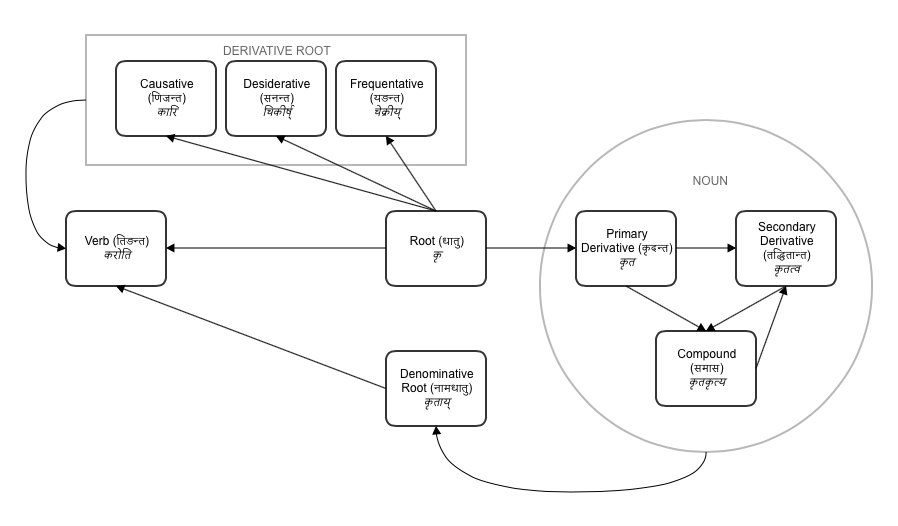|
Exercise Page 501
|
|
CORRECTION: Page 502, Line 6 should begin "किरीटिनं" not "किरीतिनं", and the corresponding vocabulary listing on Page 512 should be "किरीटिन्" not "किरीतिन्".
HINT: The words of the exercise verses from the Bhagavad Gītā should be reordered in order to facilitate translation. If you are having trouble working out the anvaya or word order, you can download the suggested word here.
Primary Derivation
Primary derivation is the process of deriving a noun by adding a suffix to a root. The suffix determines the 'sense' in which the noun is derived, called the व्युत्पत्ति in Sanskrit. The most common senses are listed below as primary derivatives of the verb 'enjoy':
- Agent: enjoyer
- Object: object of enjoyment
- Instrument: means of enjoyment
- Location: place of enjoyment
- Abstract: enjoyment
- No change
- गुण of final vowel
- Final palatal consonant becomes guttural, i.e. च् becomes क्, ज् becomes ग्
Secondary Derivation
Secondary derivation is the process of deriving a noun by adding a suffix to another noun or adjective. Again, the suffix determines the sense in which the secondary noun is derived. The most common senses are listed below as secondary derivatives of the adjective 'cow':
The best approach to derivation is to be familiar with the changes that roots and nouns undergo to become derivatives so that one can trace the derivative back to its source. The diagram below summarizes the various derivational processes in Sanskrit, using the example of the root कृ ('do'). All of these processes have been encountered in previous lessons except for the Frequentative type of Derivative Roots.
- Pertinence: pertaining to a cow
- Abstract: cow-ness
- Possession: possessing a cow
- Descendance: descendant of a cow
- No change
- वृद्धि of first vowel ± गुण of final उ
The best approach to derivation is to be familiar with the changes that roots and nouns undergo to become derivatives so that one can trace the derivative back to its source. The diagram below summarizes the various derivational processes in Sanskrit, using the example of the root कृ ('do'). All of these processes have been encountered in previous lessons except for the Frequentative type of Derivative Roots.

